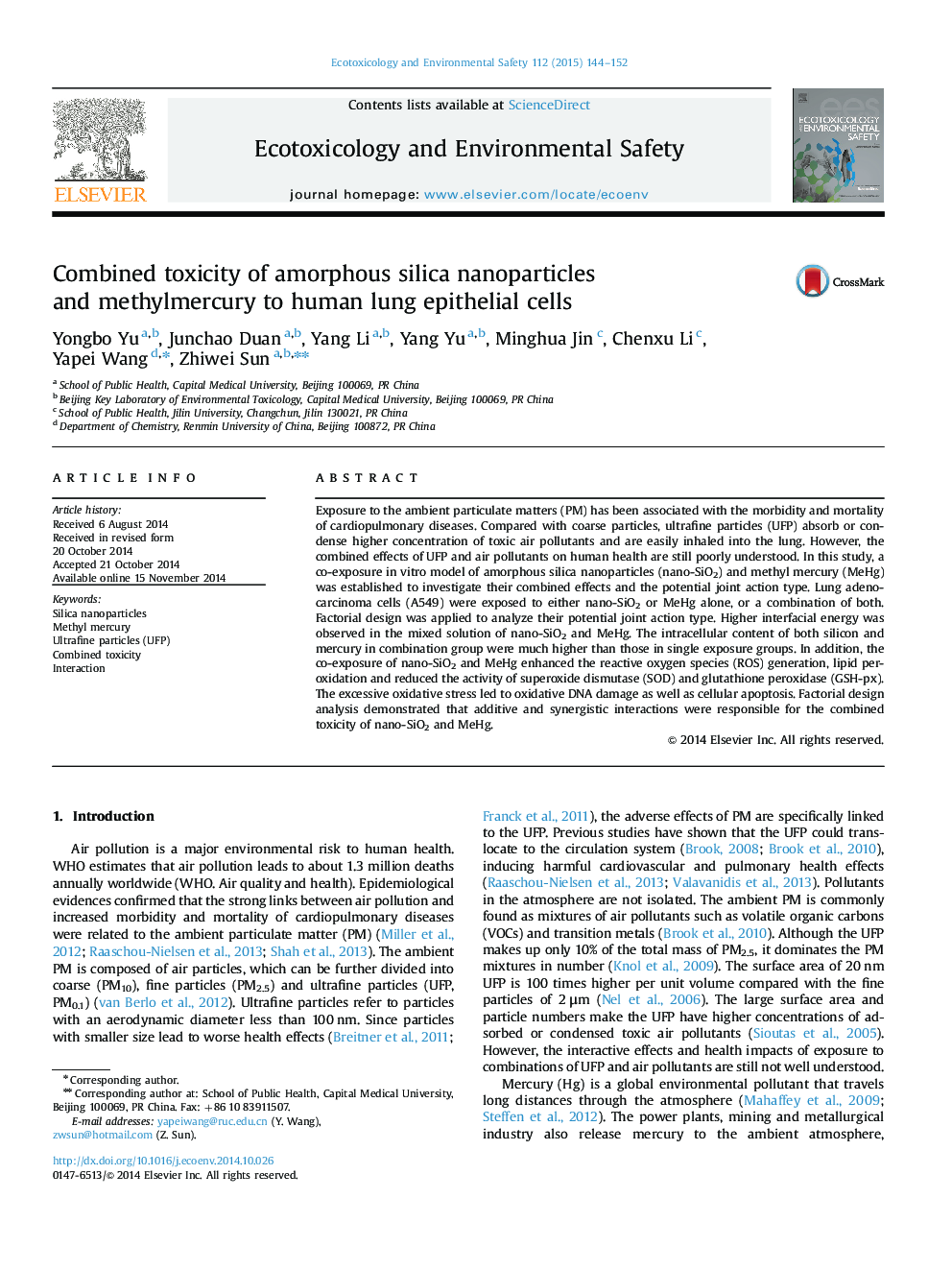| Article ID | Journal | Published Year | Pages | File Type |
|---|---|---|---|---|
| 4419795 | Ecotoxicology and Environmental Safety | 2015 | 9 Pages |
•Ultrafine silica and methylmercury exhibited combined toxicity.•Additive and synergistic interactions account for the combined toxicity.•Factorial design was applied to analyze the interactions of air pollutants.•Combined toxicity depended on the interactions between the air pollutions.
Exposure to the ambient particulate matters (PM) has been associated with the morbidity and mortality of cardiopulmonary diseases. Compared with coarse particles, ultrafine particles (UFP) absorb or condense higher concentration of toxic air pollutants and are easily inhaled into the lung. However, the combined effects of UFP and air pollutants on human health are still poorly understood. In this study, a co-exposure in vitro model of amorphous silica nanoparticles (nano-SiO2) and methyl mercury (MeHg) was established to investigate their combined effects and the potential joint action type. Lung adenocarcinoma cells (A549) were exposed to either nano-SiO2 or MeHg alone, or a combination of both. Factorial design was applied to analyze their potential joint action type. Higher interfacial energy was observed in the mixed solution of nano-SiO2 and MeHg. The intracellular content of both silicon and mercury in combination group were much higher than those in single exposure groups. In addition, the co-exposure of nano-SiO2 and MeHg enhanced the reactive oxygen species (ROS) generation, lipid peroxidation and reduced the activity of superoxide dismutase (SOD) and glutathione peroxidase (GSH-px). The excessive oxidative stress led to oxidative DNA damage as well as cellular apoptosis. Factorial design analysis demonstrated that additive and synergistic interactions were responsible for the combined toxicity of nano-SiO2 and MeHg.
